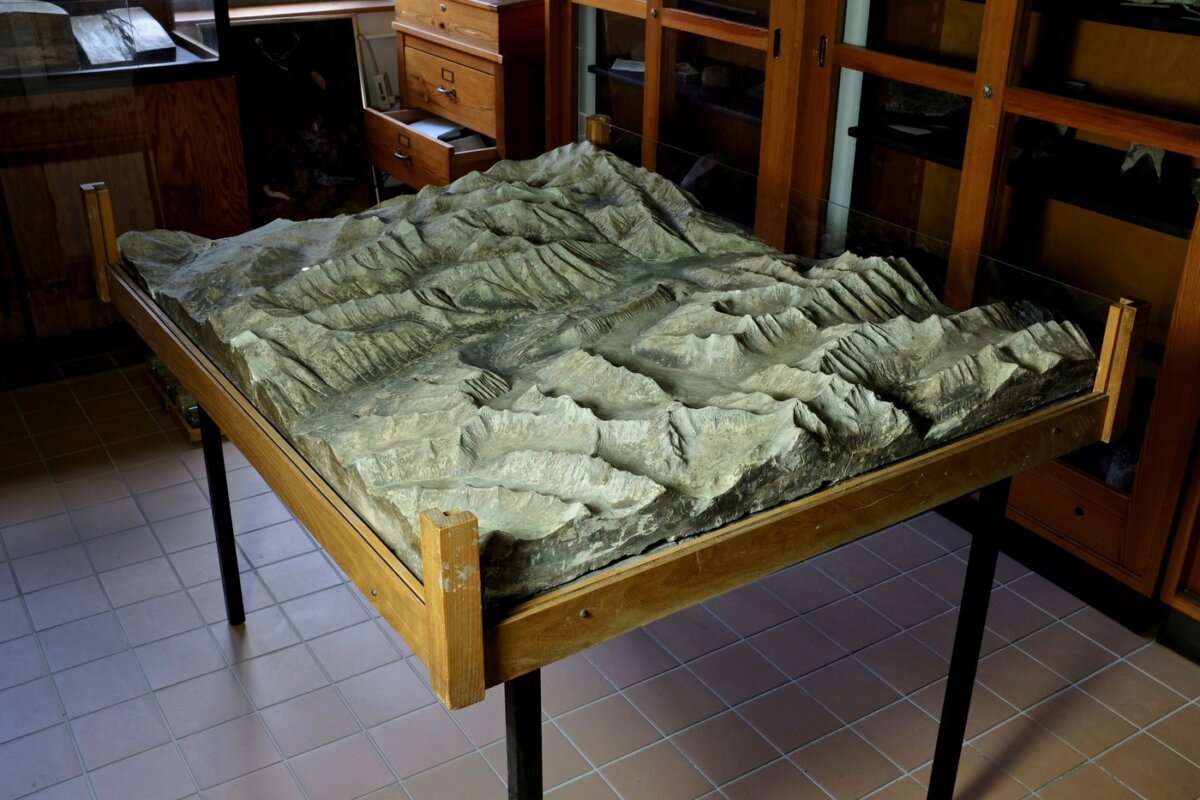The Aletsch model was once the main attraction of the Berlin Kunstkammer
There is a landscape model of the Swiss Alps in the Geomorphological-Geological Collection of the Humboldt University of Berlin (HU). What was not known for a long time is that it is a historical illustrative object from the Berlin Kunstkammer, which was based in the Berlin Palace. Scientists from various disciplines at the HU have discovered this together with Oscar Wüest, curator of the Landslide Museum in Goldau, Switzerland.
The topographical relief shows the upper Rhone valley with the Aletsch glacier (located in the Swiss canton of Valais). It measures approximately 140 by 100 centimetres, is largely made of plaster and wood and is in need of restoration. It was already included in a project database at the Hermann von Helmholtz Centre for Cultural Technology at Humboldt University in 2011. At that time, however, neither the provenance nor the context in which the landscape model was made could be clarified. The art historian Eva Dolezel came across this database entry while working on her dissertation. The information from the archival sources suggested that the model in the HU collection was an object from the Berlin Kunstkammer.

